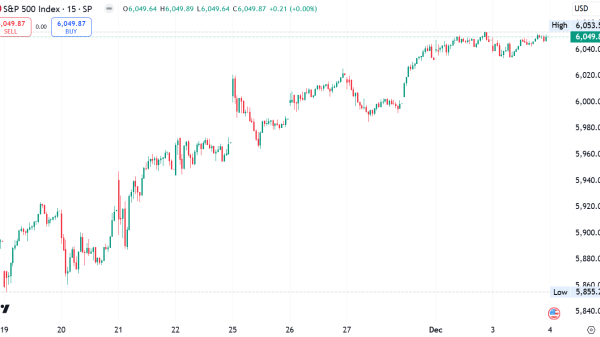Retention Ratio: Definition and Formula with Examples
When assessing a company’s financial health and growth potential, the retention ratio is a crucial metric. This ratio reveals the percentage of net income a company retains to reinvest in its operations rather than distributing as dividends. Known alternatively as the plowback ratio, it contrasts directly with the payout ratio, which indicates the percentage of earnings paid out as dividends to shareholders.
Key Insights
Companies have options on how to utilize their profits; they can distribute them as dividends or reinvest them for growth.
The retained earnings represent the portion of profit not distributed to shareholders. For a company, these retained earnings act like a savings account where cumulative profits are stored and potentially reinvested.
The retention not only helps in assessing how much money a company retains for reinvestment but also gives insights into the company’s potential for growth and earnings expansion.
If a company is not reinvesting its retained earnings effectively, it may resort to increasing debt or issuing new equity to fund growth, which could impact its financial health negatively.
While the retention ratio indicates retained earnings for reinvestment, the payout ratio shows the portion paid to shareholders.After paying dividends, the remaining profits are termed as retained earnings.
Typically, rapidly growing companies exhibit high retention ratios because they reinvest a substantial portion of earnings back into the business.
How To Calculate?
The retention ratio can be calculated using two methods. One can either compare the retained earnings directly to net income or adjust net income by subtracting dividends before making the comparison. Here are the formulas:
Direct method
Retention Ratio = Retained Earnings / Net Income
Alternative method
Retention Ratio = (Net Income – Dividends Distributed) / Net Income
Practical Application and Limitations
To calculate the retention ratio, you need to follow these steps and understand related concepts:
Collect Financial Data from the Balance Sheet:
Begin by gathering financial records, such as balance sheets, old reports, receipts, and other relevant documents.
These documents provide the necessary information to determine total debt and shareholder’s equity. Focus on items like short-term and long-term liabilities, common and preferred stock, bonds payable, and total income.
Enter Numbers into the Retention Ratio Formula:
After identifying the numbers that reflect the company’s debt and shareholders’ equity, you should input these numbers into the retention ratio formula. Make sure to place all numbers correctly.
Evaluate the Results and Understand the Plowback Ratio
Analyze the retention ratio to decide if operational changes are necessary. High retention ratios indicate a high level of earnings reinvested back into the company rather than being distributed as dividends, also reflected in a low dividend payout ratio. Assess the implications of this ratio on the company’s growth and financial health.
Understanding these calculations and ratios, like the plowback ratio, retention ratio formula, and dividend payout ratio can guide strategic decisions and financial management within a company.
The retention ratio is particularly high in growth companies, such as those in the technology or biotech sectors, which reinvest most of their earnings to accelerate revenue and profit growth.
Conversely, companies in more mature industries with stable earnings, like utilities or telecommunications, usually have lower retention ratios due to higher dividend payouts.
Interpreting the Retention Ratio
A high retention ratio might not always show good financial health. To understand this metric well, we must first know the company we are analyzing.
Smaller, newer companies often have higher retention ratios. They focus on business development and research and development (R&D) investments. This focus can explain why they prefer to keep their earnings instead of paying dividends.
A startup might also face slow sales initially, leading to less income available for shareholders, thus a higher retention.
Larger, more established companies typically have lower retention ratios because they are already profitable and do not need significant investment in R&D. Therefore, these companies might choose to give regular dividends rather than keep more earnings.
Like any financial ratio, a single number doesn’t mean much on its own. Analysts need to compare this ratio with those of similar companies in the same industry to get useful insights.
This comparison helps them see how well one company retains earnings compared to others.
Analysts also track these ratios over time to spot trends and yearly changes. Watching these trends helps analysts understand shifts in a company’s performance over specific periods.
Limitations
However, the retention ratio has its limitations. A high ratio does not always guarantee effective reinvestment of retained earnings.
The ratio does not indicate how the reinvested funds are being used, whether for capital expenditures, research and development, or other growth initiatives.
Therefore, it should be used in conjunction with other financial metrics to get a comprehensive view of a company’s financial health and its efficiency in using retained earnings.
Real-World Example
Consider Meta Platforms Inc. (formerly Facebook), which retains a significant portion of its earnings to fund future growth initiatives rather than paying dividends.
For instance, with retained earnings totaling $41.981 billion and a net income of $22.112 billion, Meta’s retention ratio stands at 189%. This exceptionally high ratio is indicative of Meta’s strategy to fuel growth through reinvestment, typical of tech companies aiming for rapid expansion.
Bottom Line
The retention ratio is a crucial metric for analyzing a company’s financial health and growth potential. Companies calculate the retention ratio to determine the percentage of net income they retain for reinvestment, rather than distribute as dividends.
This metric, also known as the plowback ratio, contrasts with the dividend payout ratio, which shows the percentage of earnings paid out to shareholders.
To effectively calculate the retention ratio, companies gather financial data from the balance sheet, including liabilities, stocks, and total income.
High retention ratios typically indicate that a company is reinvesting a substantial portion of its earnings back into its operations, a common trait in rapidly growing companies. Conversely, lower ratios suggest that a company is returning more earnings to its shareholders through dividends.
While the retention ratio provides valuable insights, it has limitations. A high ratio does not necessarily mean that the reinvested funds are being used effectively.
Therefore, it’s essential to interpret this ratio in conjunction with other financial metrics and industry norms to get a comprehensive view of a company’s financial health.
The post Retention Ratio: Definition and Formula with Examples appeared first on FinanceBrokerage.


































